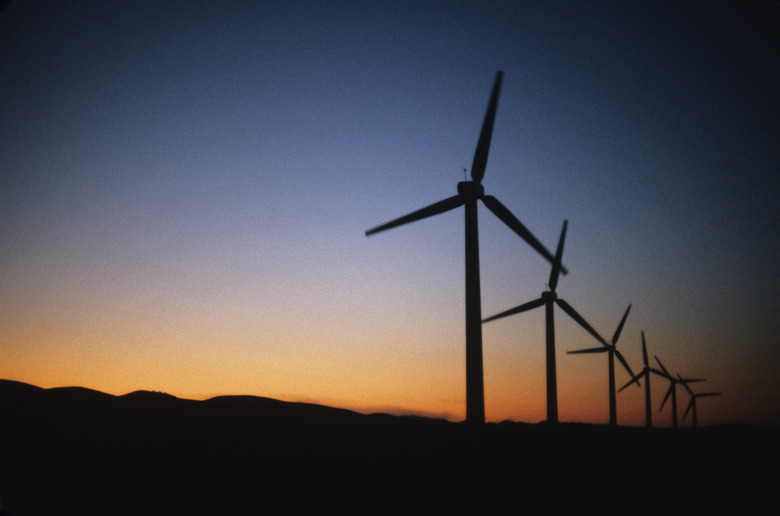The Best Places To Put Wind Turbines To Produce Electricity
Wind farms don't work in crowded residential areas where the noise pollution bothers humans. They also don't work where birds frequent because the turbines can kill these flying animals when they unknowingly fly into them. Wind turbines and farms perform better in unpopulated windy areas with access to the power grid.
TL;DR (Too Long; Didn't Read)
Areas best suited to wind farms and turbines include:
* Locations
that have frequent, sustained winds.
* Unpopulated areas with inexpensive access to power grids.
* Sites that currently
use polluting sources for electricity generation.
* Places that
yield the best health, climate and pollution benefits for the region's
residents.
Where the Wind Blows
Where the
Wind Blows
In the United States, the fastest winds occur in between the West Coast and the Midwest, along the gusty Great Plains. According to a study done by researchers from Carnegie Mellon University, there are almost no wind farms on the East Coast. Most farms are between the Midwest and the West Coast in the region of the country that gets a lot of wind.
Turbine Height
Turbine
Height
The taller the wind turbine, the more efficient it becomes because there's more wind at the higher elevations. Average height for a turbine begins at 50 meters or about 164 feet tall, but they can be as big as twice that at 100 meters or about 328 feet tall. A chosen site must have enough room to accommodate wind turbines at the heights needed to generate electricity efficiently. The ground must also be able to support the massive foundations required to buttress these massive wind turbines.
Offshore Wind Farms
Offshore Wind
Farms
The European Union has made a push to move from fossil fuel electricity generation to renewable resources in the form of wind farms that dot the coastline from the Irish Sea to the Baltic Sea. Here the wind turbines stand nearly 650 feet tall. One revolution of the turbine's 300-foot long blades can cover the energy consumption of a single household in the U.K. for a day. In 2015, the EU built nearly a third of its new wind farms offshore. Massive cranes drive the foundations for these turbines 50 feet into the ocean floor. As of 2016, roughly 12 percent of the EU's energy comes from wind energy.
Power Grid Access
Power Grid
Access
One of the problems of building wind turbines in the middle of nowhere is the infrastructure costs to access the power grid. Some of the best areas of the country, such as across the Great Plains, lack the transmission lines and equipment needed to access the power grid. The building of transmission lines adds extraneous costs that oftentimes outweigh the overall benefit.
Locations With Climate and Health Benefits
Locations With Climate and
Health Benefits
It seems sort of obvious to state that wind turbines work best in areas that receive lots of wind, but this isn't always the case. "A wind turbine in West Virginia," says Kyle Siler-Evans, a Ph.D. researcher from Carnegie Mellon University, "displaces twice as much carbon dioxide and seven times as much health damage as the same turbine in California." He and other researchers think that wind turbines result in greater health and climate benefits in areas of the country such as:
- Pennsylvania
- West Virginia
- Ohio
In these states, polluting coal plants predominately contribute to the power grid as opposed to areas in California, a state with stringent air pollution regulations in place since 1967.
References
Cite This Article
MLA
Brenner, Laurie. "The Best Places To Put Wind Turbines To Produce Electricity" sciencing.com, https://www.sciencing.com/places-wind-turbines-produce-electricity-5159049/. 23 April 2018.
APA
Brenner, Laurie. (2018, April 23). The Best Places To Put Wind Turbines To Produce Electricity. sciencing.com. Retrieved from https://www.sciencing.com/places-wind-turbines-produce-electricity-5159049/
Chicago
Brenner, Laurie. The Best Places To Put Wind Turbines To Produce Electricity last modified March 24, 2022. https://www.sciencing.com/places-wind-turbines-produce-electricity-5159049/
